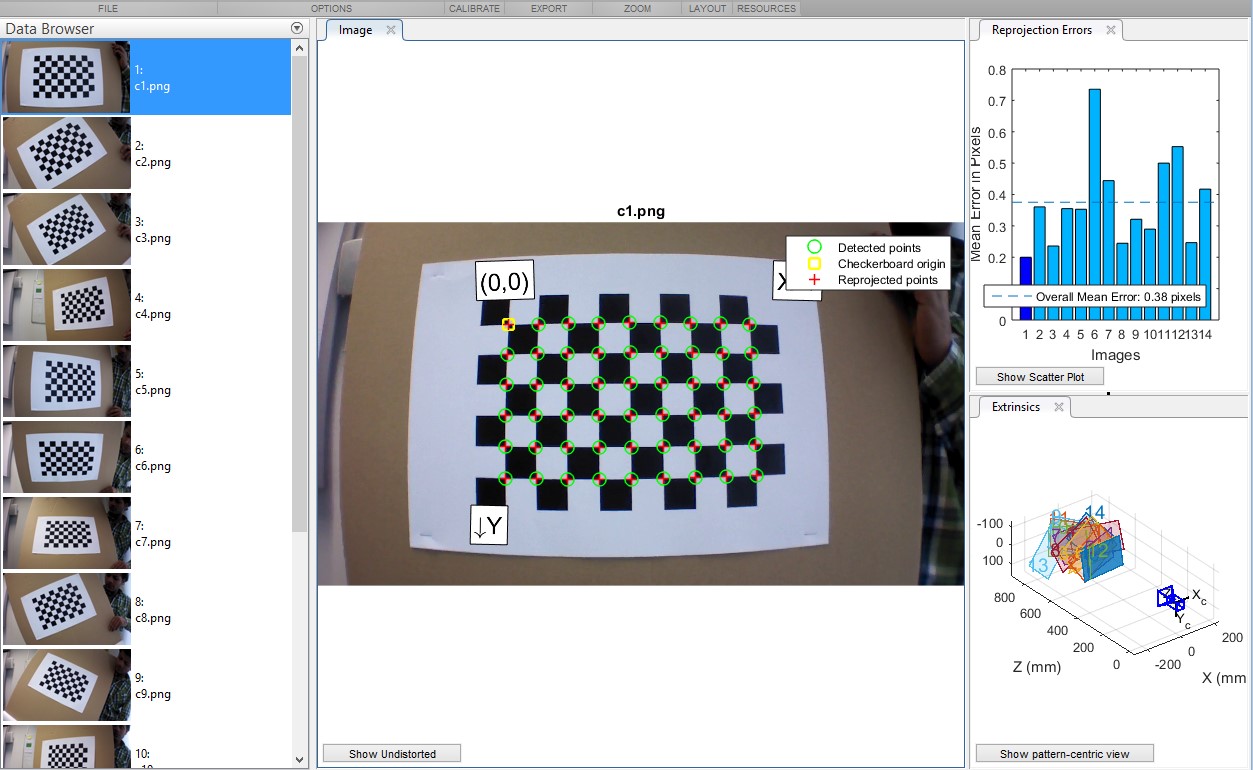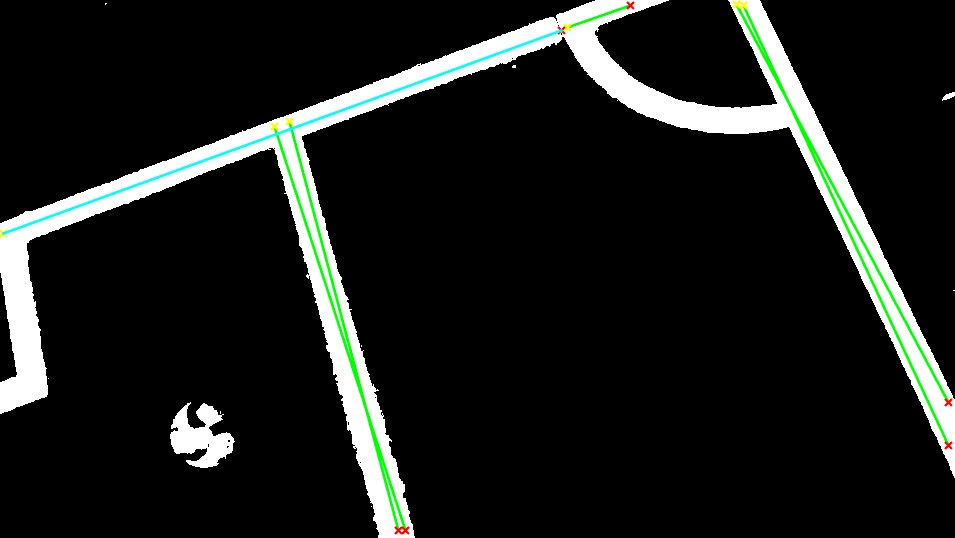Line Detection: Difference between revisions
No edit summary |
No edit summary |
||
| Line 48: | Line 48: | ||
<p> | <p> | ||
The Line Detection sub-task outputs the best line candidates | The Line Detection sub-task outputs the best line candidates detected.</p> | ||
==Use in refereeing== | ==Use in refereeing== | ||
<p> | <p> | ||
One condition to enable | One condition to enable [[Refereeing Out of Pitch]] is to have detected and matched the lines detected with the references provided by the [[Field Line Estimator]].</p> | ||
Revision as of 15:51, 31 March 2016
Design Choice
The purpose of detecting lines is to identify the lines that enclose the field and be able to referee an out of pitch ball or a goal scored. Along with ball detection, a vision based method was required to gain accuracy while refereeing without using invasive methods on the ball or the pitch.
Methodology
Similar to the circular shape matching described in the ball detection approach, here the Hough transform is used to detect lines. Before doing so, several steps must be performed:.
1. Undistort image to get straight lines (In case a wide/fisheye camera is used)
2. Apply a color mask to get only the lines on the frame
3. Line Detection

Undistort image (If applicable)
In order to undistort the image to get the real perspective you should get the transformation matrix between the frame and the real world. Thus, the camera parameters should be known. If this are not known you can always calibrate the camera based on the output of a specific object with several frames from different perspectives. The commonly used technique is to use a calibration template with black and white squares of the same length disposed alternatively like a ‘chessboard’. Then, you will only need to know the real size of the squares to calibrate it. In this project, the ‘Camera Calibration’ App from MATLAB was used to get the camera parameters.

The result after applying the correct transformation matrix should be getting the real straight lines within the frame:

Apply a color mask to get only the lines on the frame
See Ball Detection color filtering section for a detailed explanation.
Line Detection
In the last step, the Hough transform is used to get lines candidates after some pre-processing has been done, e.g. RGB to black and white conversion, thinning, etc.
The main concern here is to be able to select the correct lines to enable the refereeing. The selecting process used in this project involves the following steps:
- Clustering lines with similar ‘rho’ and ‘theta’ (For definitions of these parameters link). The real number of lines detected will be the number of clusters identified under a pre-defined ‘rho’ and ‘theta’ threshold.
- Selecting the longest line segment within each cluster detected as a representative of that line.
- Filtering the real outer lines out of all the candidates by comparing them to the information provided by the ‘World Model’.

Thus, in the end, we will compare the ‘rho’ and ‘theta’ of the candidate lines provided by the Hough transform with the ‘rho’ and ‘theta’ estimation of the outer lines provided by the ‘World Model’ that takes into account the drone/camera position, FOV, height and psi/yaw angle. One condition to enable refereeing is to have a positive matching between the lines detected and the outer lines references provided by the ‘World Model’. [Link]
Line detection output
The Line Detection sub-task outputs the best line candidates detected.
Use in refereeing
One condition to enable Refereeing Out of Pitch is to have detected and matched the lines detected with the references provided by the Field Line Estimator.